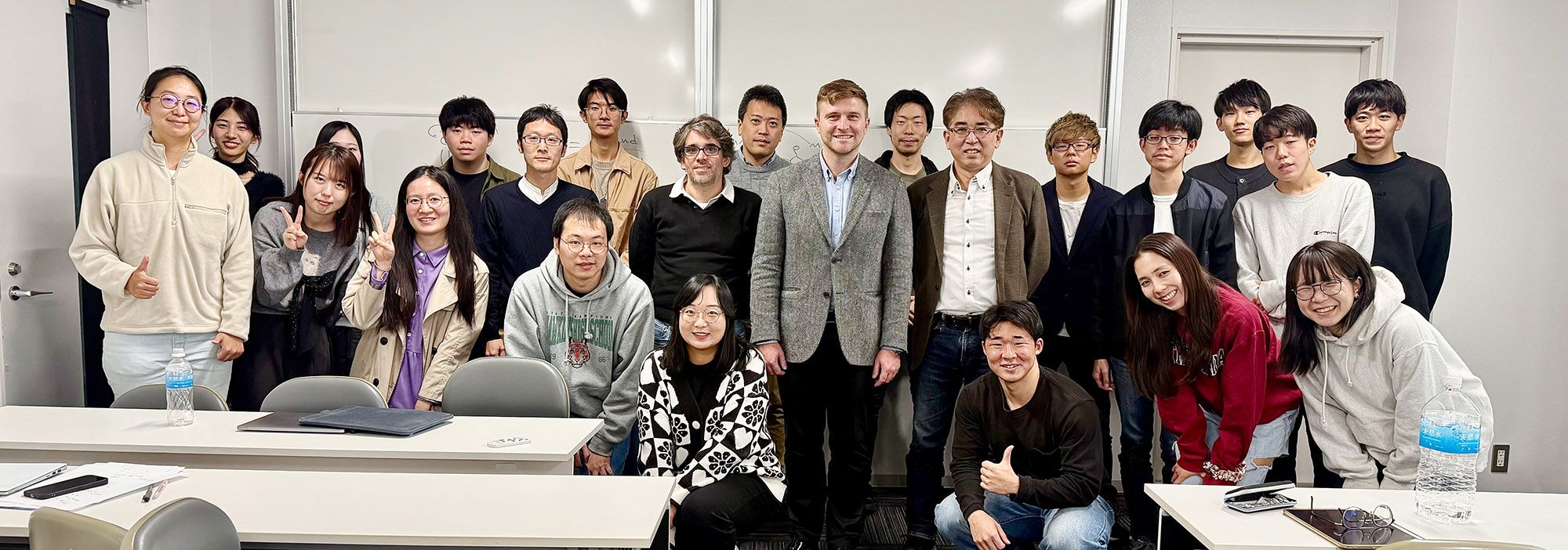August sunshine floods the Brozek Lab. Busy students in lab coats and safety glasses talk, tinker and troubleshoot.
The academic year starts soon, and there's much to get done in short order. Associate professor Carl Brozek is heading to Japan through the Fulbright U.S. Scholar Program.
None of them, including Brozek, knows he'll be there when his research colleagues at Kyoto University get some epic news about their work on structures known as metal-organic frameworks, or MOFs. Brozek's team develops the versatile materials, which are a sort of molecular sponge, in his lab at the UO.
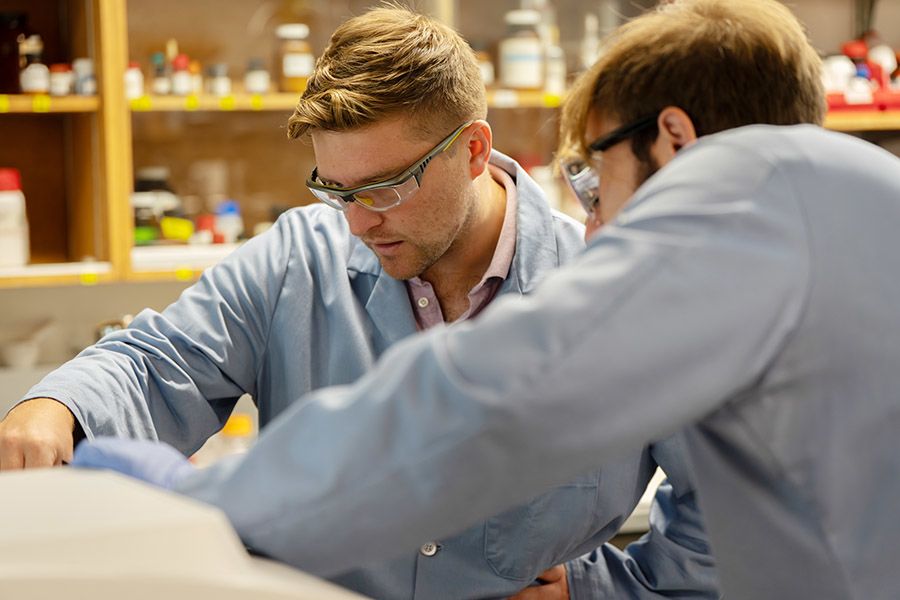
In October, the Nobel Prize in Chemistry was awarded to Kyoto University's Distinguished Professor Susumu Kitagawa, as well as Richard Robson and Omar M. Yaghi, a trio of pioneers in metal-organic framework research.
Brozek first met Kitagawa in 2010 at the Massachusetts Institute of Technology during a seminar hosted by Brozek's doctoral adviser. They kept in touch, and Brozek has been collaborating with Kitagawa's colleagues in Kyoto.
His Fulbright was intended to help deepen that connection, but it also unexpectedly gave him a front-row seat to the announcement of one of this year's Nobel Prizes, which honors the field Brozek has been working in since graduate school.
"It was exciting to be in Kyoto for the big news," Brozek said. "Since 1999, these three scientists have been developing a new form of molecular architecture. We've just begun to put MOFs to work, and they hold great promise for industry, the environment and medicine."
MOFs are materials made from metal ions linked together with organic molecules in repeating crystal structures. Like microscopic Tinker Toys, the structures are endlessly customizable. So far, scientists have created more than 100,000 different kinds.
And they have almost as many potential applications as they do structures.
Because they act as porous sponges that can be specifically "tuned" to draw in specific molecules, MOFs could be used to extract water from desert air, separate lead from water or remove carbon dioxide from the atmosphere.
Someday, they might be used in industrial plants to separate one chemical from another, saving tremendous energy and money. Currently, chemical separation using heat accounts for approximately half the world's industrial energy consumption.
MOFs also could revolutionize lithium-ion batteries that power phones and cars, Brozek said.
"I love studying MOFs," Brozek said. "They're extremely complex but also controllable. We continue tweaking them because we can."

MOF-303 can capture water vapor from desert air during the night. When the sun heats up the material in the morning, potable water is released. ©Johan Jarnestad/The Royal Swedish Academy of Sciences

MIL-101 has relatively large cavities and has been used to catalyze the decomposition of crude oil. It can also store Hydrogen and Carbon Dioxide. ©Johan Jarnestad/The Royal Swedish Academy of Sciences
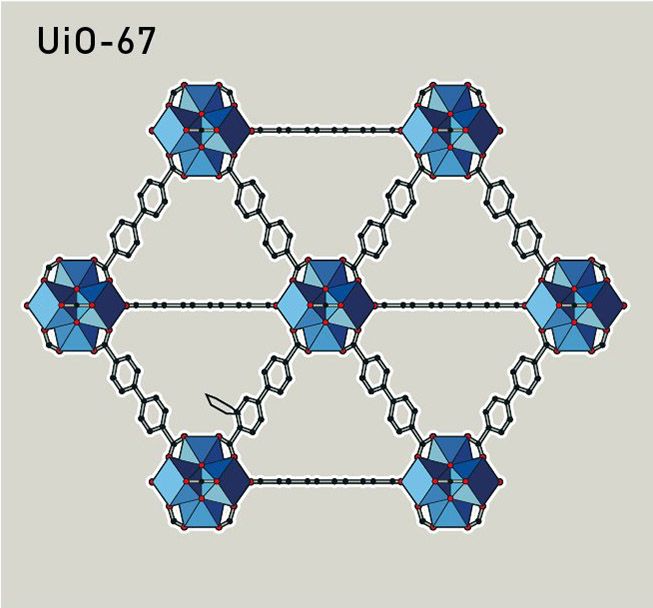
UiO-67 has potential for water treatment and removing pollutants. ©Johan Jarnestad/The Royal Swedish Academy of Sciences
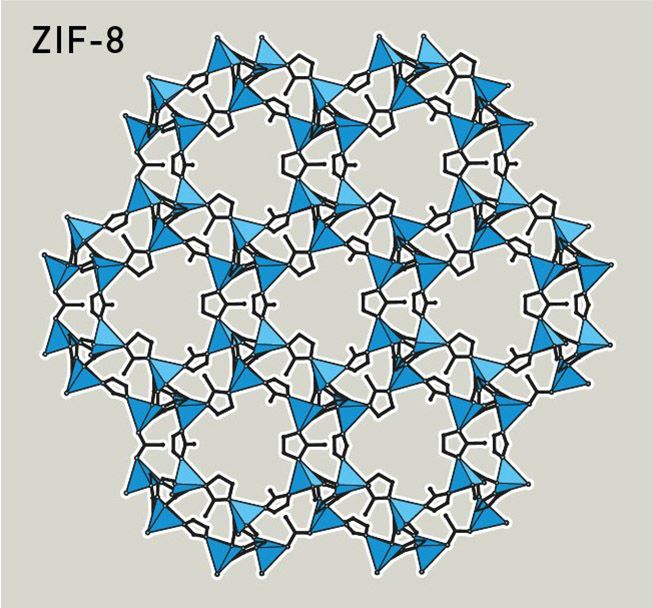
ZIF-8 has been used experimentally for mining rare earth elements from wastewater. ©Johan Jarnestad/The Royal Swedish Academy of Sciences
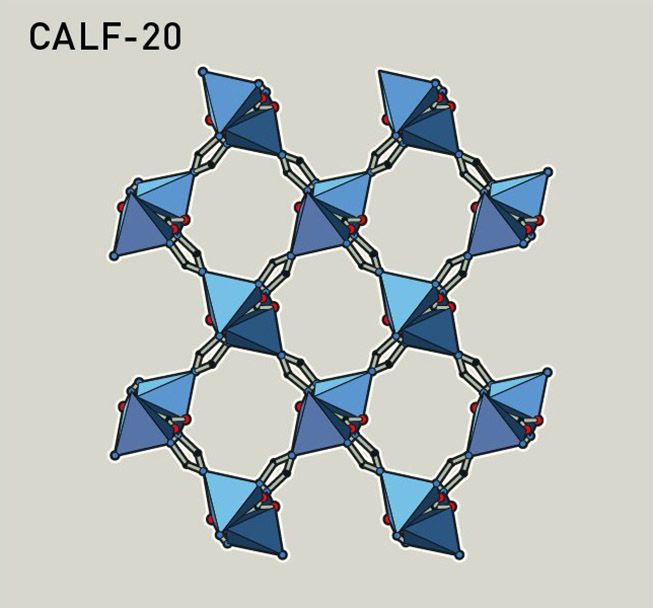
CALF-20 has an exceptional capacity to absorb Carbon Dioxide. It is currently being tested in a factory in Canada. ©Johan Jarnestad/The Royal Swedish Academy of Sciences
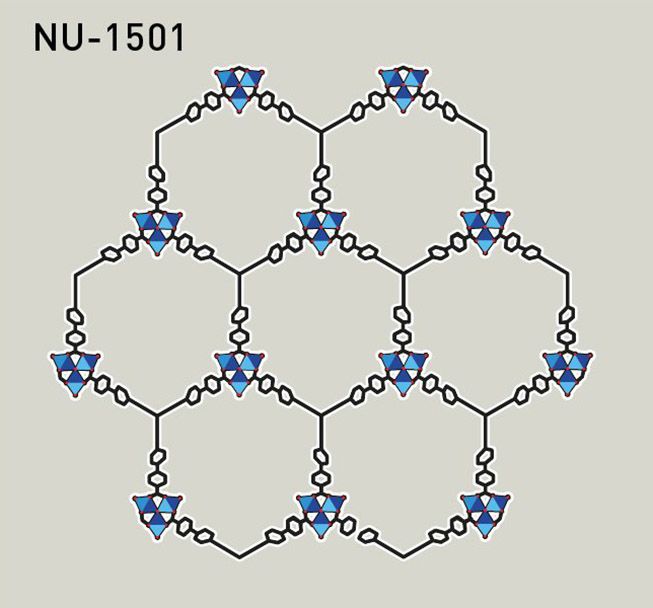
NU-1501 has been optimized to store Hydrogen at normal pressure. Hydrogen can be used to fuel vehicles, but in ordinary high-pressure tanks the gas is extremely explosive. ©Johan Jarnestad/The Royal Swedish Academy of Sciences
Magical MOFs
The Nobel-winning potential of MOFs comes from some of their unique properties.
First off, the structures have very open structures that make them super-porous yet still strong, able to absorb many times their weight.
The Nobel Committee for Chemistry recently compared MOFs to Hermione Granger's handbag in the Harry Potter series. In the final book, she places a charm on her beaded handbag so she can stuff all sorts of things into it, with no effect on the bag's weight or appearance.
Similarly, MOFs have a seemingly endless ability to soak up outside materials. Inside all those crystalline structures, custom cavities serve as tiny hotel rooms. Only certain molecules can check in and out, while the framework remains intact.
Because of their cage-like structures, the materials also have extremely high surface area.
Most objects - a ballon, for example - have an inside and an outside with one surface. MOFs' intricate networks of interlaced 3D surfaces multiply their surface capacity. One tablespoon of the material can have the surface area of a football field.
That extreme surface area makes MOFs extremely porous. It also means target molecules can easily move in and out of them, with plenty of room to latch onto the sites that are designed to draw them in.
That's why the structures have so much potential to separate one chemical from another. All that surface area also makes them great for batteries, which, Brozek explained, function by transferring ions across surfaces.

MOFs
Metallic-organic frameworks are tiny lab creations with huge possibilities:
- Harvesting water from desert air
- Scrubbing carbon dioxide from the atmosphere
- Storing gases like hydrogen for fuel cells
- Delivering medicine to the body
- Treating wastewater
- Transforming battery technology
- Reducing industrial energy needs
- Separating lead from water
Image captions
 Image 1
Image 1A.I. generated conceptual illustration of MOF

A.I. generated conceptual illustration of MOF
A.I. generated conceptual illustration of MOF
Aha moment
Brozek's love for chemistry was sparked by his mother, a professor of medicine. But he almost took a different path as an undergraduate.
"My sophomore year, I told my parents I'm not going to do the science thing," Brozek said. "They encouraged me to talk to an adviser, who told me 'You are far too young to be disenchanted with science' and invited me to a poster session for graduate students."
Brozek was so inspired he joined that adviser's lab and eventually landed a summer research gig. But it took a lightbulb experience to seal the deal.
Brozek was biking back to his apartment and pondering some lab results when he had, as he put it, kind of a moment.
Scientifically, the results were inconsequential. But they were his. He had discovered something no one else knew.
Experiencing that creative side of science was one of the greatest things he'd ever felt.
That moment led to grad school at MIT, then the UO as a professor, where he works to provide that thrill of discovery for students. He still loves teaching general chemistry and other introductory courses.
The UO's Chemistry and Biochemistry Department is part of the College of Arts and Sciences.
Most recently, Brozek's creative curiosity led him to Japan.
It was unseasonably warm in Kyoto on Oct. 8. Brozek was finishing up emails when a colleague invited him to grab some takeout and watch the big announcement with faculty members and staff.
Nobody knew if Kitagawa would receive a Nobel Prize, but it was a possibility. When the winners were declared, the room erupted.
"You could see people looking at each other," Brozek said. "Some had tears. Everyone in that room seemed to feel a sense of 'We did it.'"

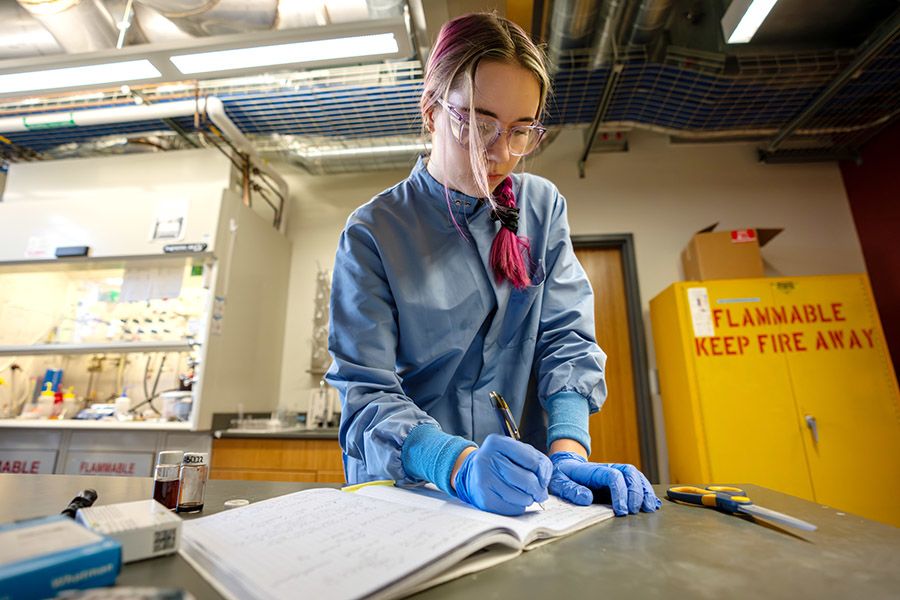
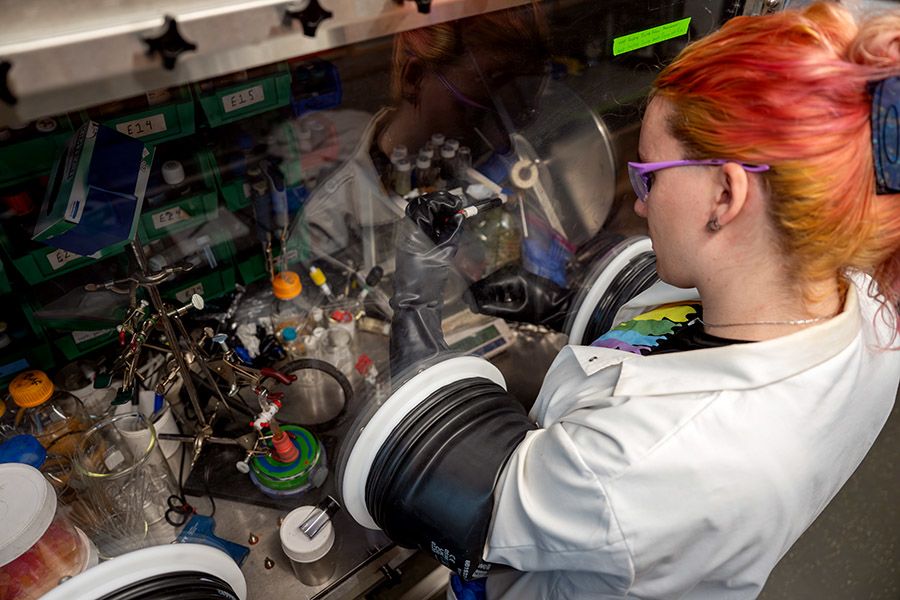

Transpacific science
For Brozek and his collaborators, though, there's more yet to explore.
At Kyoto University, Brozek is working with professor Satoshi Horike and other researchers, including students. Horike's lab is part of the Institute for Integrated Cell-Material Sciences, which Kitagawa co-founded.
The project unites complementary expertise and instrumentation from the Brozek Lab and the Horike Lab. It explores how and why the properties of MOFs change at different scales.
When the structures are made into tiny nanoparticles, rather than larger bulk pieces, they can behave very differently. (For a sense of scale in the nano world, a human hair is approximately 80,000 nanometers wide.)
Image captions

For instance, Brozek and his colleagues in Kyoto already have found that MOFs that pull water from the air are dramatically more effective when they are smaller and can absorb water from drier air.
Understanding why that's happening could help researchers develop better MOFs for specific purposes, giving them finer control over the properties of the material.
Brozek thinks those different behaviors might be related to microscopic chemical and physical changes in the structures at different scales. For example, one of his focus areas is phase change.
A common example of a phase change is what happens when ice melts into water and frozen H2O molecules that were forced into rigid crystals transform back into a less structured, liquid glob.
But the phase changes that intrigue Brozek are more esoteric, such as phases that relate to magnetic properties. He's discovering that nanoscale MOFs can exhibit phases that they cannot reach at all when they're bigger.
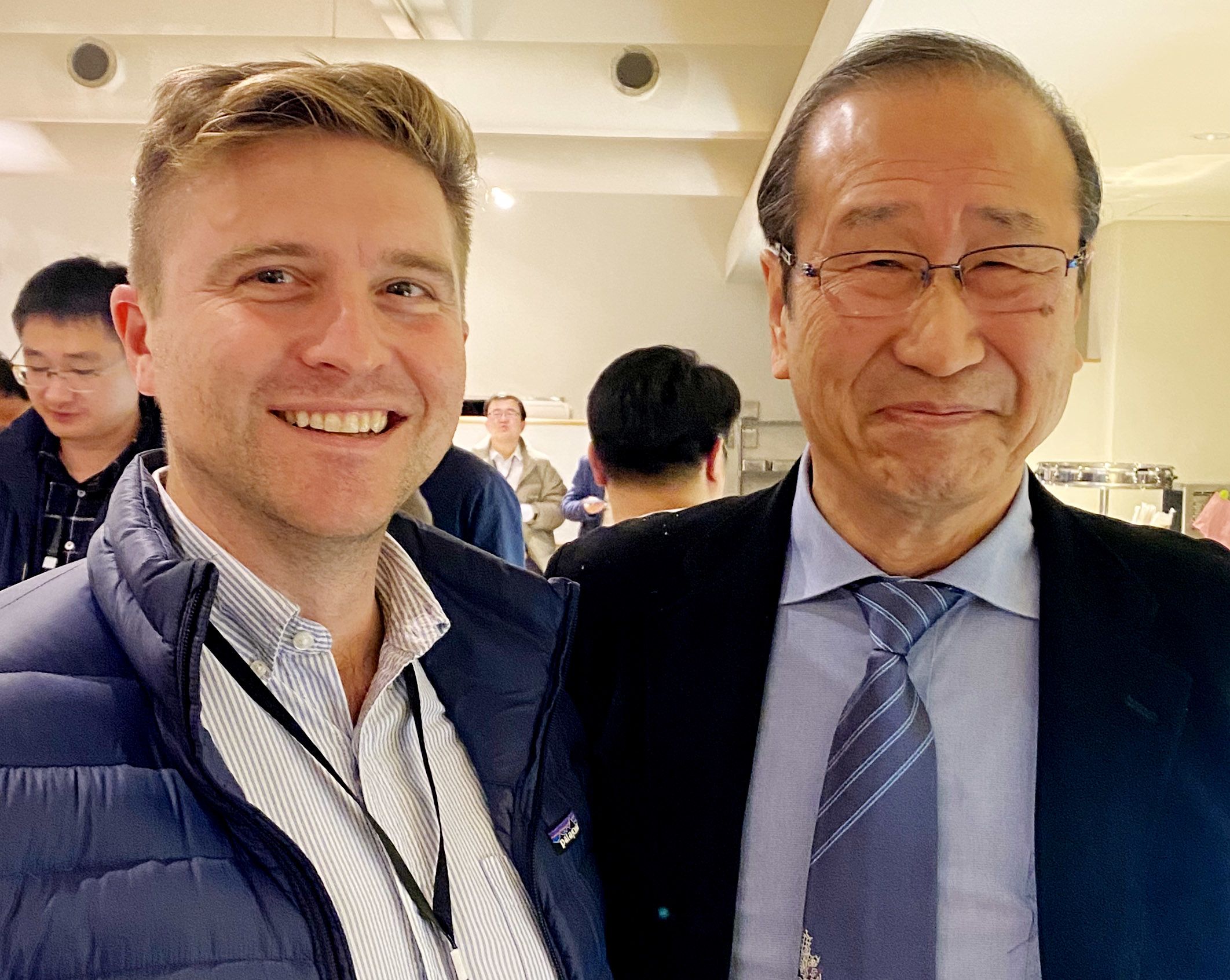
80,000
The width of a human hair in nanometers
1 gram
Amount of MOF required to get the surface area of a football field
100,000+
Number of different MOFs synthesized (so far)
Imagine if changing the size of a snowflake changed the melting temperature of the water that it's made from, Brozek said. That's analogous to the weird behavior he's investigating.
Why does the same material behave so differently just because it's ground into smaller particles? Brozek thinks those bizarre behaviors may be related to a property researchers call softness, or a material's ability to change shape but maintain its structure.
By that definition, your foldable camping chair is soft. Take it out, it expands. Pack it up, it gets small again without losing its structure or breaking the connections. Smaller MOFs may be softer, Brozek hypothesizes. Because they're more flexible, they can distort to accommodate extra water.
That could explain how the tiny MOFs he's studying in Kyoto can absorb water from drier air, shedding light on why different-sized MOFs have different properties.
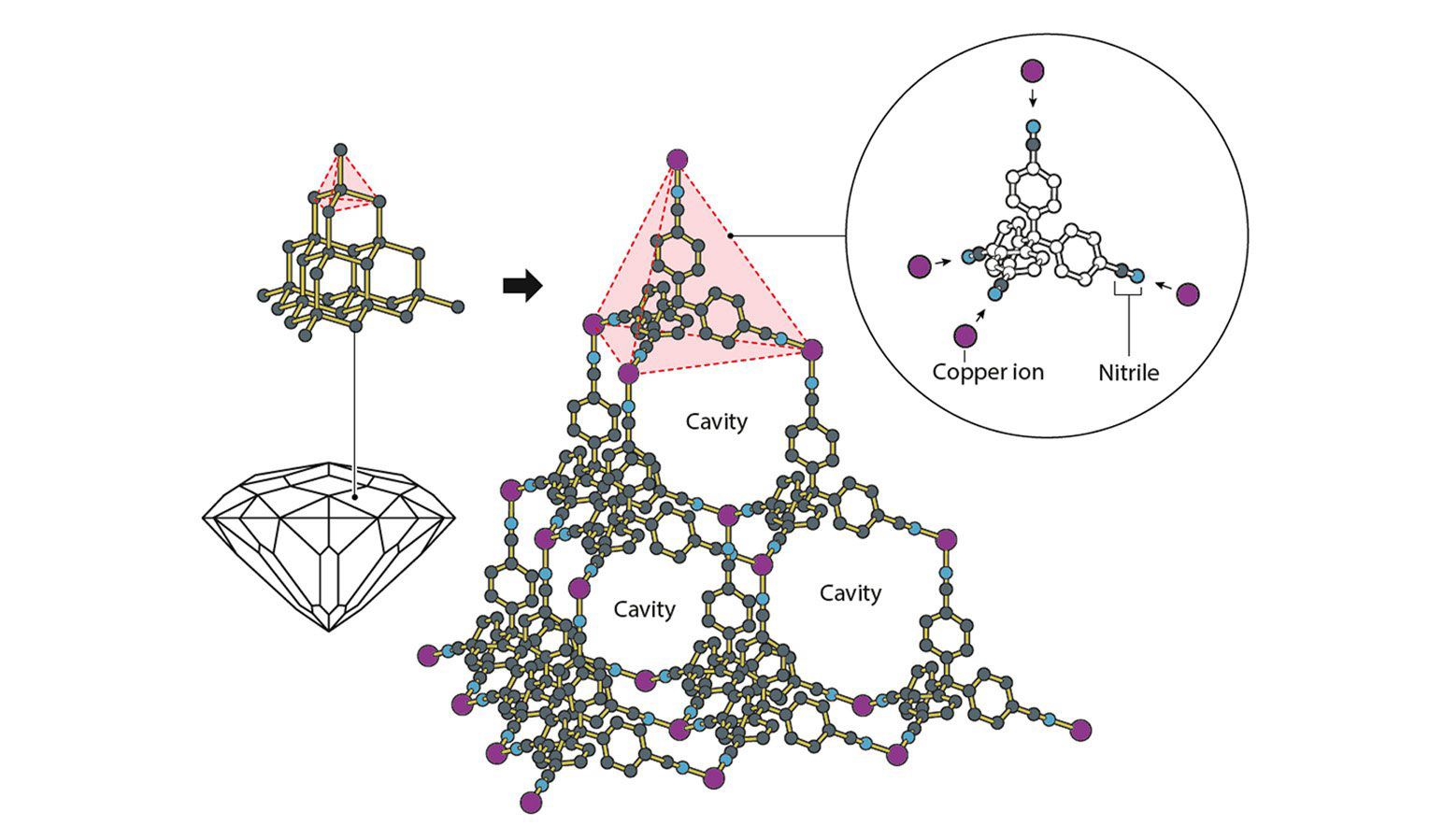
More importantly, those insights will help researchers tweak these highly tweakable materials in precise, useful ways.
"Two topics Kitagawa discussed during the Nobel Prize press conference were water harvesting and softness, which he described as the future of MOFs," Brozek said. "It's very exciting to see these themes coming together here in Kyoto, where they have some of the best instrumentation in the world related to water harvesting."
In addition to that research, Brozek will be visiting universities throughout Japan, giving talks and building new partnerships.
Kyoto University is still buzzing about the Nobel Prize, he said. When he returns to Eugene, Brozek hopes to keep up the MOF momentum.
"The recent Nobel Prize winners were from Japan, Australia and the U.S.," Brozek said. "I anticipate my work in Kyoto will lead to future international collaboration in this exciting field."
